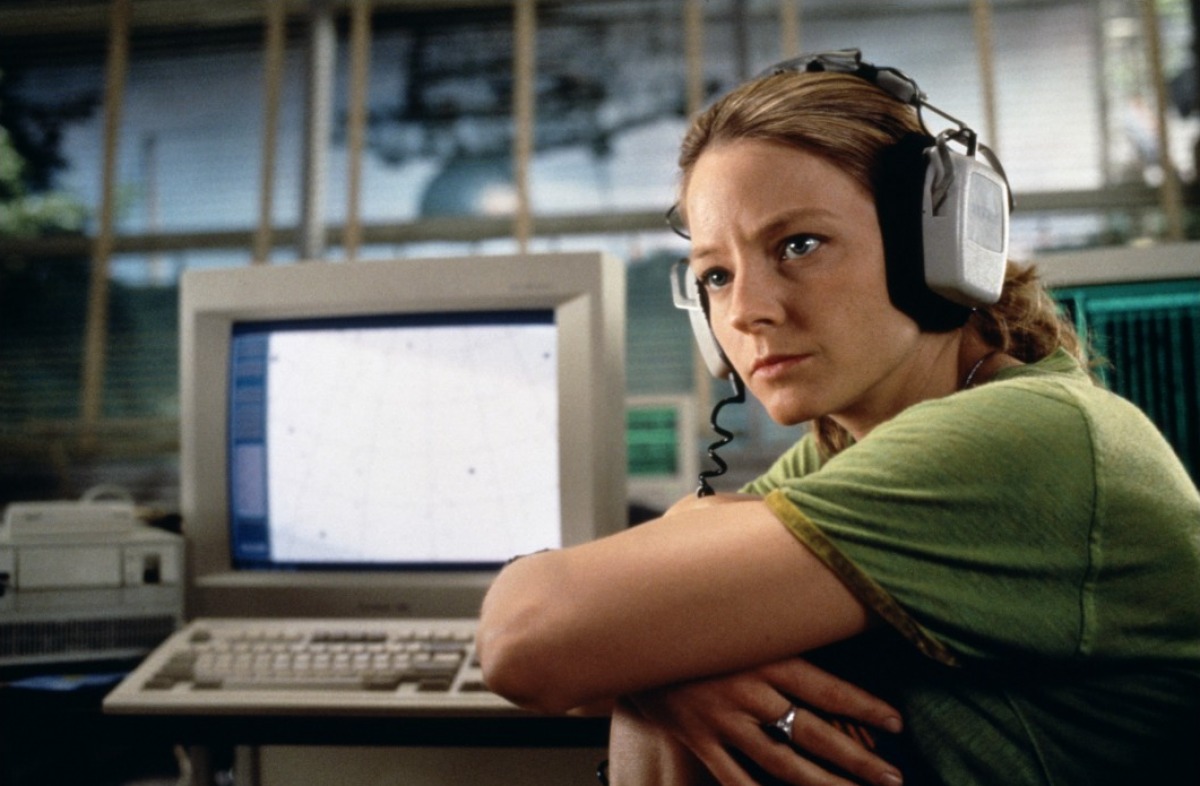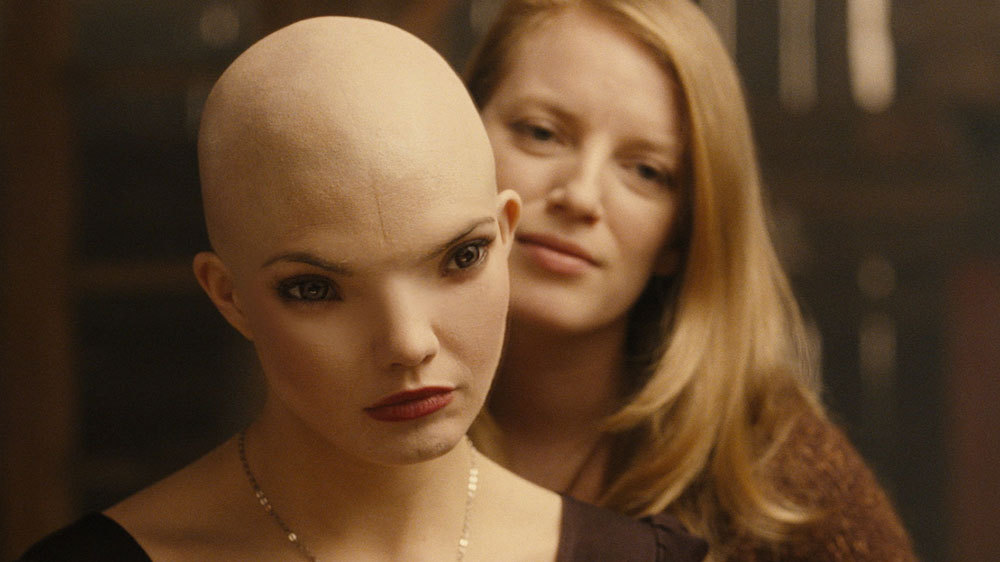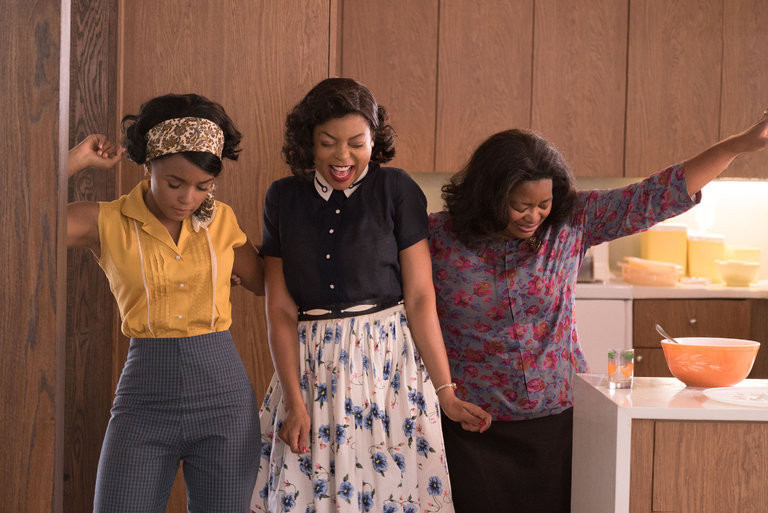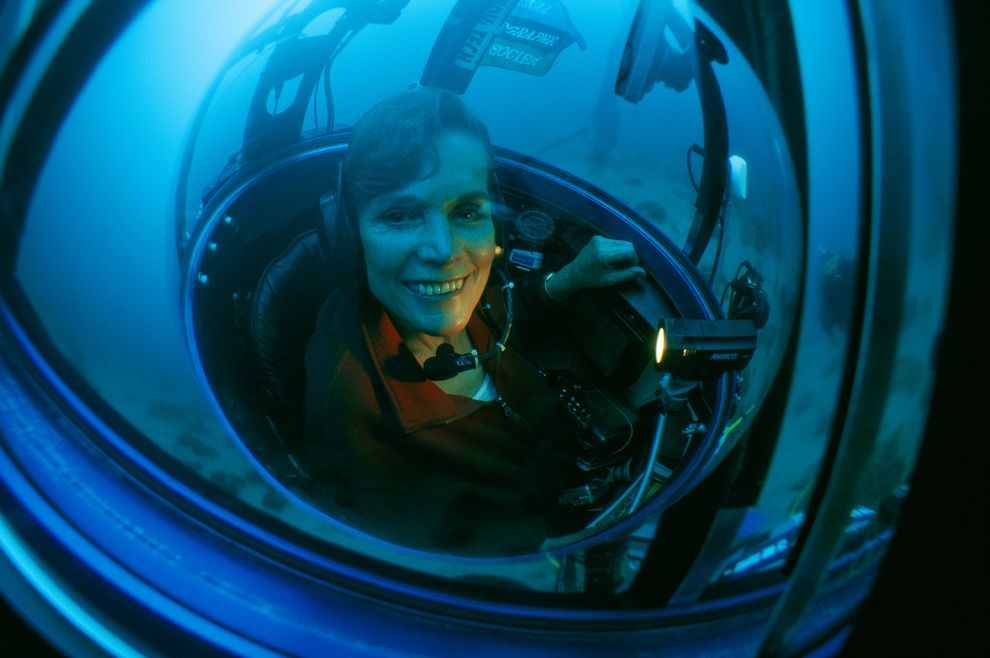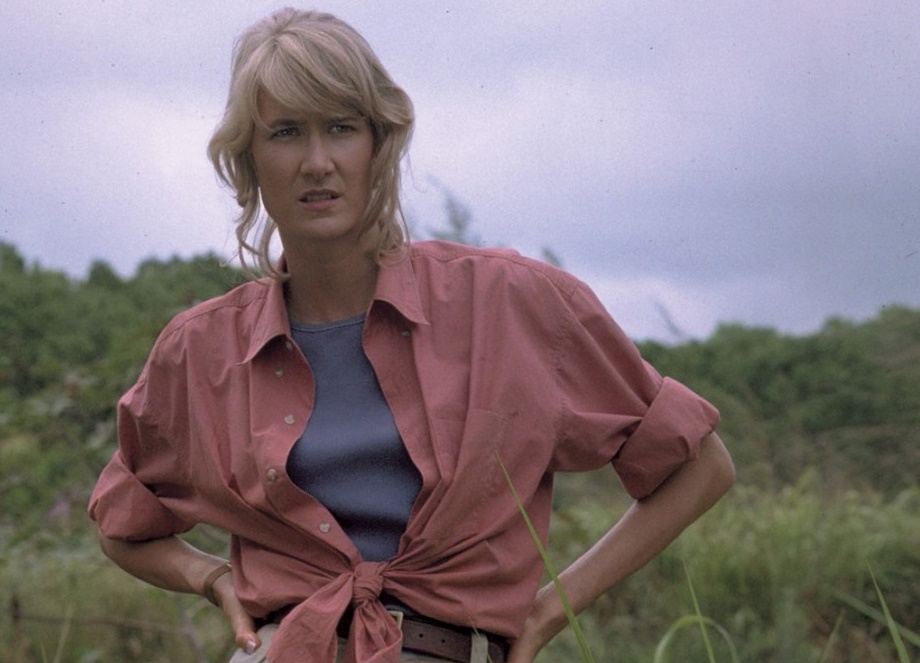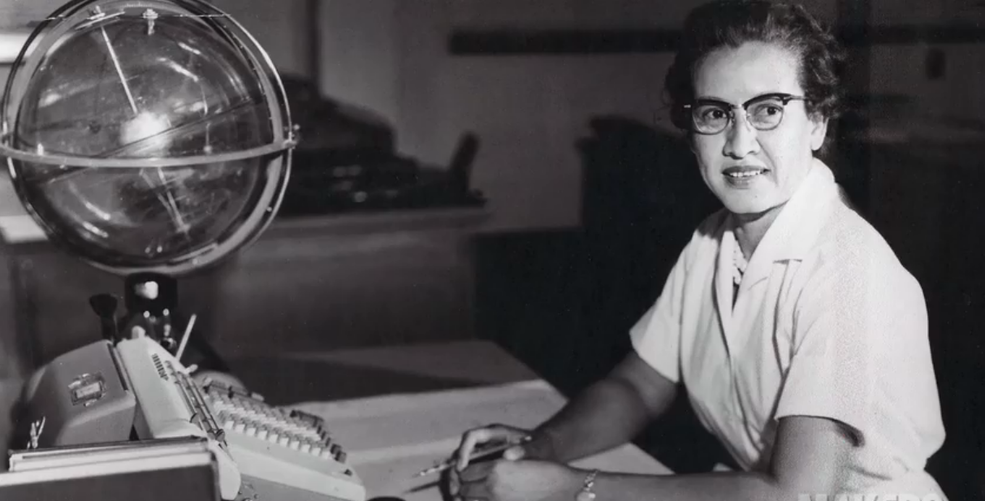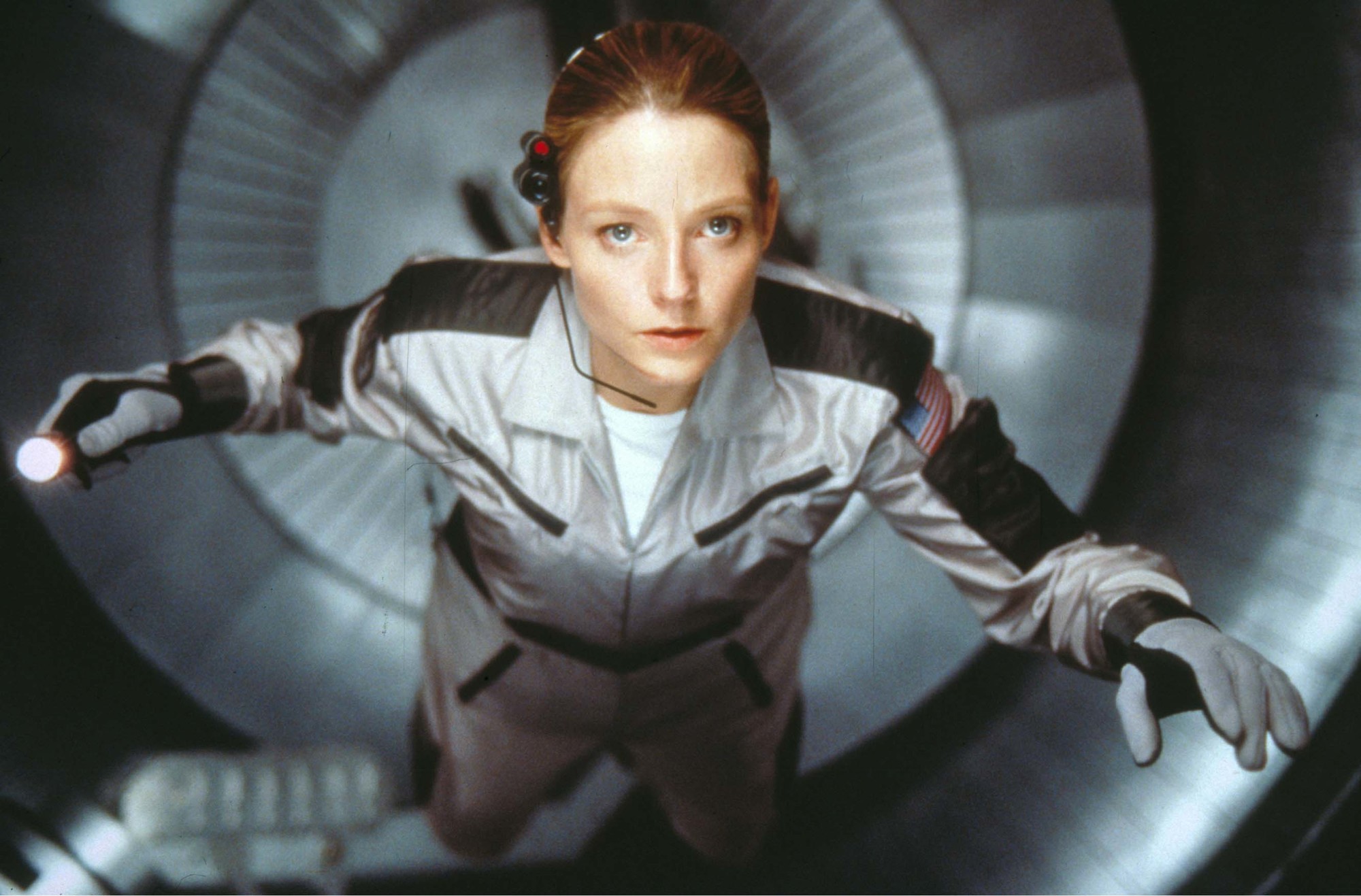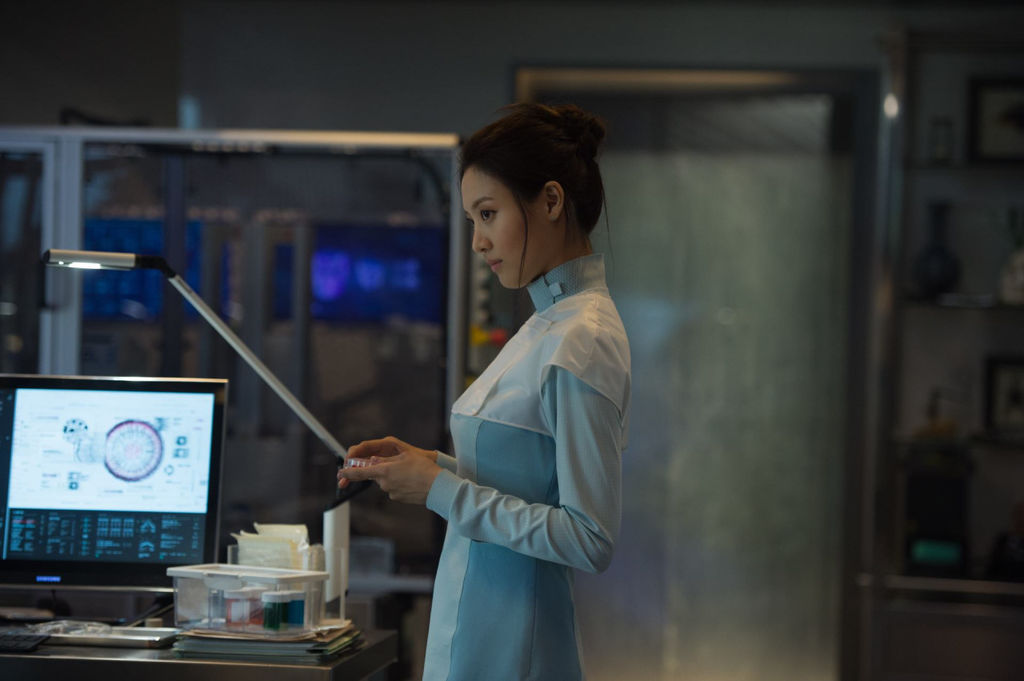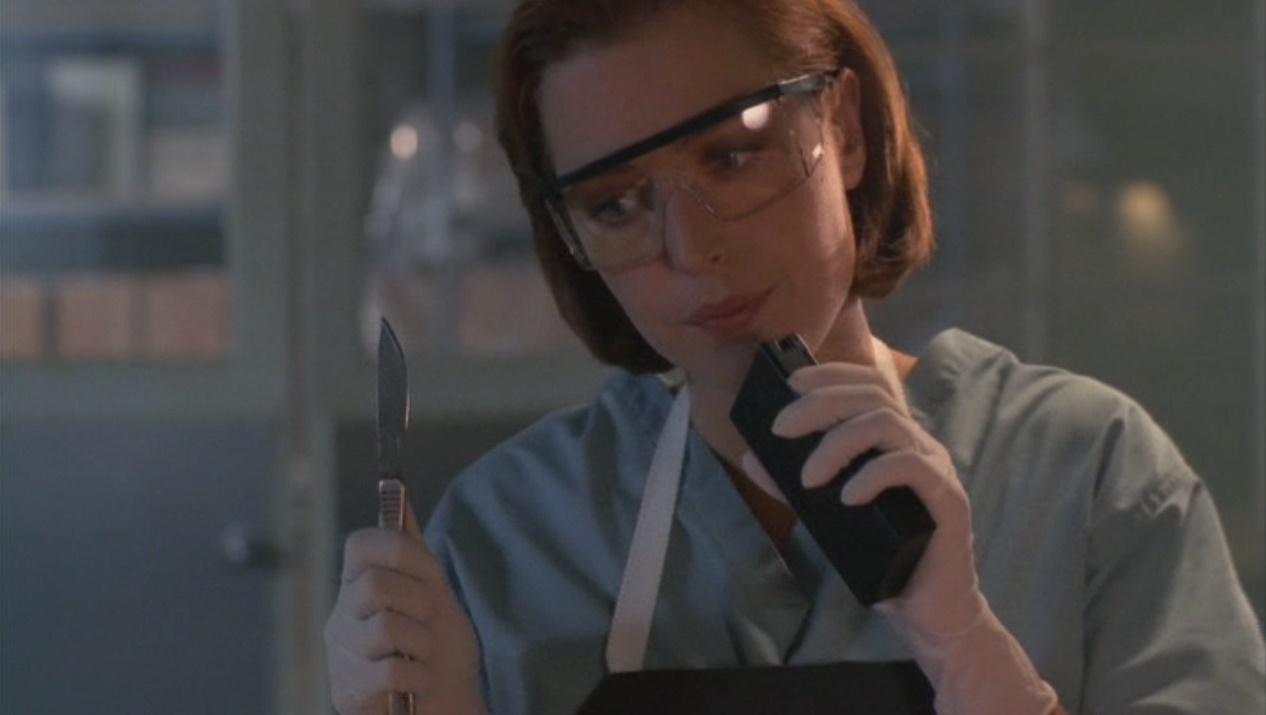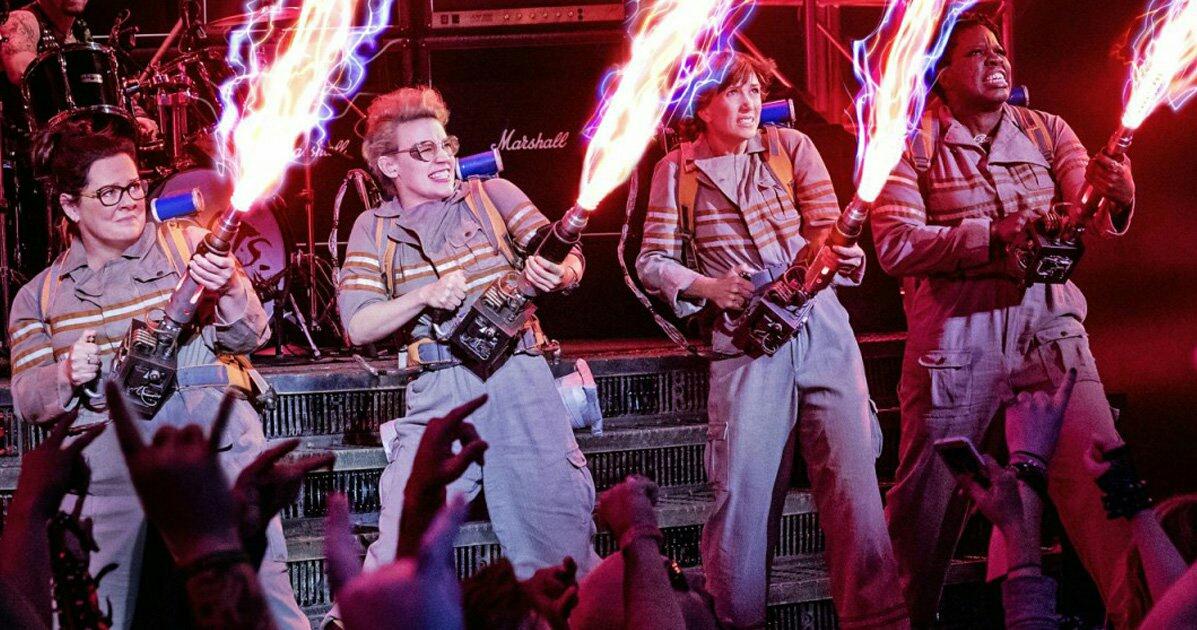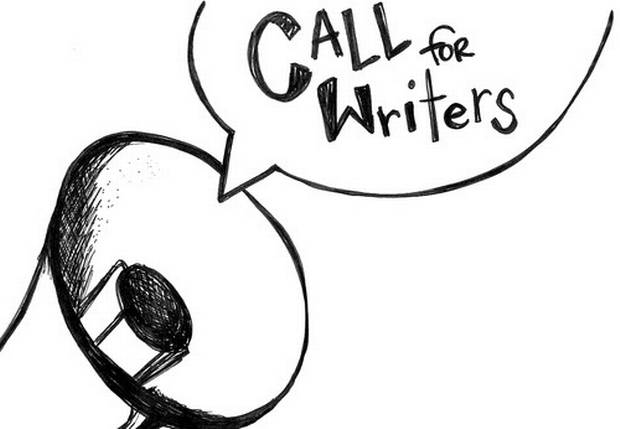This guest post written by Kelcie Mattson appears as part of our theme week on Women Scientists.
For half my life I planned to be an astrophysicist.
You can credit the mental implantation of that idea to the 1997 film Contact. I was eight years old, and recognition clicked when I saw Eleanor “Ellie” Arroway. Her love for space exploration coalesced with my own in a way I hadn’t known was possible, and I thought, clear as a pinpoint — I want to be that.
Ultimately, that passion translated into writing stories about science rather than living them myself, so I’m not a successful case study. But Contact remains a singularly astute portrayal of a woman combating the oppressive confines of institutional sexism, as well as a reminder of how deeply mainstream cinema still needs progressive feminist portrayals that contradict gender clichés.
Based on the novel by the late astrophysicist Carl Sagan, Contact follows Dr. Ellie Arroway (Jodie Foster), a leading member of the Search for Extraterrestrial Intelligence (SETI) program, as she strives to prove the existence of alien life. After she discovers a radio signal transmitting from a seemingly uninhabited star system, the governments of the world unite with NASA to decode what the mystery alien message means for the future of humanity.
Contact makes waves just by existing. Although the science fiction genre is peppered with extraordinary portrayals of pioneering women, it’s rare for them to actively serve as the protagonists of any major motion picture, let alone a multi-million dollar sci-fi blockbuster. Instead of maximizing the endless possibilities inherent in the genre to their fullest potential by liberating and diversifying, the majority of women take a narrative backseat to a revolving door series of leading white men. They’re lucky to do something other than fulfill the tired role of token love interest. Dr. Martha Lauzen’s “Celluloid Ceiling” report for 2015 confirms this: women comprised only 22% of movie protagonists in the top 100 highest grossing films of last year.
Contact breaks down common cinema barriers by not only featuring a complex, layered female protagonist, but a brilliantly capable, talented female scientist — a concept still lacking adequate female personification and normalization within modern narratives.
As a woman in a male-dominated profession, Ellie Arroway endures a belligerent stream of ingrained sexism. She is overruled, questioned, ignored, and derided by the men surrounding her, particularly by David Drumlin (Tom Skerritt), the Scientific Advisor to the President and quasi-antagonist. He removes the funding from Ellie’s SETI research site in Puerto Rico and threatens to do the same four years later at an observatory in New Mexico because he’s convinced the effort is a waste of resources — NASA’s and Ellie’s. Not only is “looking for E.T.” a laughable venture, he argues Ellie’s squandering her talents in the department and won’t accomplish anything of note with her career. If she’s going to be a scientist, she should at least be the kind he approves of. It’s an example of paternalistic control masquerading as concern that Ellie is quick to challenge.
During a White House press briefing about the contents of the alien message, Ellie is scheduled to speak but government officials pass her over without warning in favor of Drumlin — despite the fact Ellie leads the project responsible for discovering the extraterrestrial communique. He even surpasses her by committee vote (and exploitative manipulation) to become humanity’s ambassador to the alien race, again in spite of Ellie’s enormous qualifications.
There’s also Ellie’s on/off again love interest Palmer Joss (Matthew McConaughey), a religious philosopher who condemns her on national television for her lack of belief in a Christian God. Most damning of all, when Ellie can provide no proof of her successful meeting with the alien race, National Security Advisor Michael Kitz (James Woods) interrogates her to the point of gaslighting. She’s a delusional, hysterical woman; how can they believe a word she says? How can she believe herself?
While the pushback against Ellie’s stalwart belief in extraterrestrial life isn’t necessarily gender specific (think the mockery Fox Mulder faces in The X-Files for a male equivalent), Ellie is still infantilized and dismissed in a frighteningly recognizable way. Drumlin, Kitz, and Joss make decisions “for” her, without her, and against her, even going so far as to steal credit for her work to amplify their professional status. Despite her contributions (she discovers alien life, people), she’s summarily overlooked without question or hesitation. There are no explicit declarations of hatred, belief in female inferiority, or use of gendered slurs — just a reactionary, bone-deep confidence in their own authority as men. It’s a quieter, more insidious form of misogyny permeating all sections of society.
Because of this constant litany of sabotage, Ellie is forced to move through the world by working around the biased structural institutions. The only way Ellie can overcome those limitations, however, is through the aid of men. Reclusive billionaire S. R. Hadden (John Hurt) funds not only Ellie’s research after all other prominent institutions have rejected her, but reveals the existence of a backup spacecraft after the first is destroyed by a suicide bomber. Interestingly, Ellie is both active instigator and passive reactor in these scenarios — Hadden provides financial backing because she implores it from his company, and he’s impressed by her fiery determination. The revelation of the secondary spacecraft, though, as well as a clue that solves the coded alien message, come from Hadden’s goodwill, not an intellectual triumph of Ellie’s. Without Hadden’s money and influence, Ellie would be helpless to progress. One can even argue the suicide bomber (Jake Busey), a disgusting, religious radical responsible for innocent deaths, makes Ellie’s journey in the machine possible by causing Drumlin’s death in the explosion.
It doesn’t matter how unquestionably skilled Ellie is or how vocally she protests — her talents aren’t enough to break past the systematic barriers imposed by powerful men and the society that implicitly favors them. Her avenue for advancement isn’t dismantling the system, but sneaking through the cracks. Aliens exist; equality does not.
It’s a disappointing view of the STEM field, but not an inaccurate one. Case studies have found many women face hostility, harassment, and sexual assault from male colleagues. The script’s co-writer, Ann Druyan, experienced “huge amounts of sexism” during her career with NASA:
“I remember routinely being dismissed, interrupted — I’d say something and people at a meeting would turn to Carl [Sagan] or someone else and say, that was a really great idea you had.”
Although Ellie’s experiences occur within the framework of a semi-fantastical context, the messy convergence of religion, science, and gender serves as a reflection of the oppressive situations real women experience. She is no fainting damsel weakened by conflict, but a symbol of female resistance, her personhood achieved in non-traditional ways that challenge the status quo of masculine privilege and assumed gender divisions. She pursues her chosen scientific track to the disapproval of her colleagues. She raises her voice. She’s compassionate and filled with ideological wanderlust, as well as career-driven, aggressive, and angry. She’s lonely but rejects romance in favor of a one-night stand without considering it a sacrifice to the altar of her career, and when she does choose a relationship, it’s not a corrective act that fulfills her life. She’s an independent, sexual being who fits within the heteronormative standards of female beauty without being sexualized, yet can still wear a “really great dress” to a party. Ellie’s absolute disregard for prescribed stereotypical characteristics coded as “male” and “female” frees her to be a whole, multi-layered character in pursuit of her own kind of individuality.
Ellie even breaks the known limitations of the universe. From a narrative standpoint, she grapples with the biggest philosophical questions plaguing our existence: are we alone? What’s our purpose? Her desperation to make first contact mirrors a psychological need to cure her loneliness, an echo of the themes seen in Close Encounters of the Third Kind, Interstellar, and more. How refreshing that a woman’s personal arc is considered important enough to be entwined alongside the movie’s core theme of discovering meaning in our seemingly meaningless universe.
The fact there are no other on-screen female scientists seems a deliberate choice to further highlight Ellie’s isolation, but it’s still an unfortunate oversight by the writers. (Ellie’s mother in particular is a presence sorely lacking; she’s barely mentioned except to note she passed away during childbirth.) Given that Ellie is only one of two women with an on-screen speaking part, all of her major interactions are with men. If Drumlin and his ilk represent the sexist hegemony, the handful who support her can be classified as male allies. This is especially true of Ellie’s father, who fully encouraged his daughter’s interest in astronomy and helped advance her curiosity, rather than shut it down in its infancy as something inappropriate for a young girl. Ellie and her fellow SETI scientist Kent Clark (William Fichtner), who is blind, share a passion for their study as well being overlooked minorities. By the film’s end, even Palmer Joss overcomes his biases to accept Ellie’s differences and proclaim his belief in her story to the world; he doesn’t speak for her, but uses his influence to support her voice.
It’s worth mentioning the alien emissary that Ellie meets assumes the form of her father in order to “comfort” her. It’s a pretty blatant example of the daddy issues cliché, and compounds the realization that in addition to another species, Ellie spent her entire life searching for a paternalistic replacement (she sleeps with Joss after he unintentionally quotes Ellie’s father, a move that’s way too Oedipal for me). Although the reliance on a lost-father trope in order to give Ellie depth is irritating, it doesn’t undermine her progression or strengths as a character. Her interests weren’t defined by her father, and neither is she diminished or restricted by her grief over his loss. She’s allowed to weep at the sight of “him,” even if the alien’s attitude is infantilizing.
Ultimately, Ellie triumphs over the sociopolitical forces conspiring against her. The secure knowledge of Ellie’s own truth is what matters more than the government’s approval, and thousands of strangers stand in solidarity of belief with her. She achieves her goal of advancing scientific understanding by initiating first contact, as well as finding personal peace, without compromising her autonomy or personality. Radios, telescopes, space, math, physics — these passions were born entirely from herself, and they flourished because of her drive. There’s no question of how or why or she’s an exception. Ellie just is. She’s passionate, level-headed, exacting, devoted, optimistic, courageous, unapologetic, and full of glorious wonder.
That’s what girls need to see: the normalization of women as protagonists, as professionals, as figureheads of heroism. Viable, easily seen examples that women belong in the worlds of science and technology, that the fields aren’t exclusive boys’ clubs. A woman can achieve breakthroughs in math and physics. A woman can raise her voice and fight for her beliefs. A woman can serve as representative for the best of humanity.
More than anything, she can succeed in the face of overwhelming societal pressures trying to undermine her choices — just like social norms dictate what young women can and can’t do. Pink is for girls, blue is for boys; you play with dolls, not trucks. It’s impractical to be a scientist, or an engineer, or a radio astronomer.
Contact shows women can be protagonists, women can be scientific geniuses, and women can inspire. It compounds the deep-seated necessity for identification through representation, if nothing else than through my own experience as a young girl looking for confirmation that I wasn’t abnormal at the same time I was looking up at the stars.
If Ellie Arroway can do those things, so can we.
See also at Bitch Flicks: ‘Contact’ 20 Years Later: Will We Discover Aliens Before Fixing Sexism?; Camp and Culture: Revisiting ‘Earth Girls Are Easy’ and ‘Contact’
Kelcie Mattson is a multimedia editor by morning, aspiring critic by afternoon, and tea aficionado 24/7. She’s been a fangirl since birth, thanks to reruns of Star Trek and Buffy. In her spare time she does the blogging thing on feminism, genre films, minority representation, comics, and all things cinephile-y at her website. You can follow her on Twitter at @kelciemattson, where she’s usually overanalyzing HGTV’s camerawork and sharing too many cat pictures.
